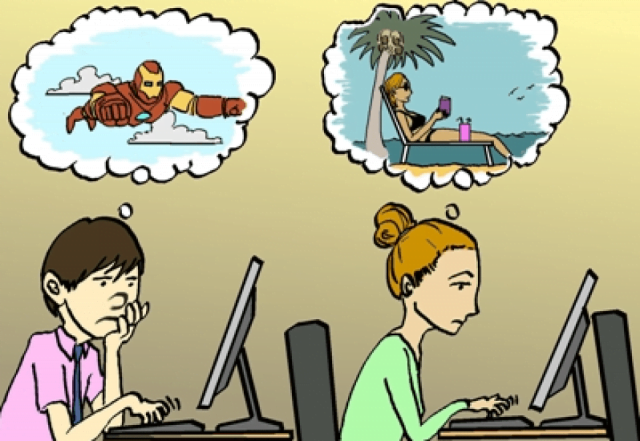Seeing Stars In Daylight & Other Eye Candies
1) “Stars in daylight”
If you have never gotten punched in the face by someone, I’ll tell you another easy way to see stars in the sunlight. Close your eyes and press over them a bit hard for a while; you’ll start seeing something vague like green waves in the shape of your eyes. At least that’s what I see.
This is called a phosphene. Wikipedia says, “A phosphene is a phenomenon characterized by the experience of seeing light without light actually entering the eye.”

Any small effect on the retina can cause phosphenes, from lack of oxygen (by excessive running) to mechanical pressure (sneeze, cough, laughter), to excessive impact of light. Our eyes aren’t empty, they’re full of a clear gel called vitreous humour. When something puts pressure on our eyes, the gel in turn puts pressure on the retina. This is just like the reverse of eyesight. In normal eyesight, light reaches the retina through the eyes and the retina signals this to the brain. In a Phosphene, the retina receives a signal (from elsewhere) and in return the brain tells the eye that there is light.
Phosphenes can also be stimulated artificially by the use of machines on a specific part of a brain called the visual cortex, and this phenomenon is actually used to show images to blind people.
But Phosphenes are not to be confused with floaters. The video below describes floaters.
2) Daydreams: the force of distraction
Has it ever happened to you that you’re reading your textbook and in between you just start thinking about something completely unrelated? Well with me it happens every day, and from what I have noticed, when that happens, my textbook is a blur.
Now, why do things blur when we’re not focusing? It is because our eyes know we’re not focusing. So they’re like, “Boss is on a break, why the hell are we working!” and swoosh they elongate the focal length. For the eyes, the shorter the focal length the more stress they have to put to squeeze the eye lens. So when we’re not looking, the eye de-stresses and lengthens the focal length.

Normal lenses cannot do that. For example, your spectacles cannot change their focal length just like that. If they could, you wouldn’t need to change them when your number increases. It is a special property of our eyes that they can change their focal length whenever they want using tiny muscles inside the eye called ciliary muscles.
3) The Red Eye: Not a 13B ghost
“Red eye” occurs in photos because light from the flash bounces off the back of the eye. The back of the eyes has a choroid, located behind the retina which is rich in blood vessels. Though the light of the flash is white in colour, when the red blood rich choroid reflects the light it makes our eyes appear red. It is same as flashing white light on a red wall, however white the light may be, the wall would still appear red.

Which reminds me.
Blind Spots
See, so much science you didn’t know about your eyes. Of course you see! And after reading this if you fell in love with eyes, listen to Eye To Eye by Taher Shah.
If you have any more eye related science that you’d like to share, tell us below in the comments.
Originally published at Economy Decoded.


